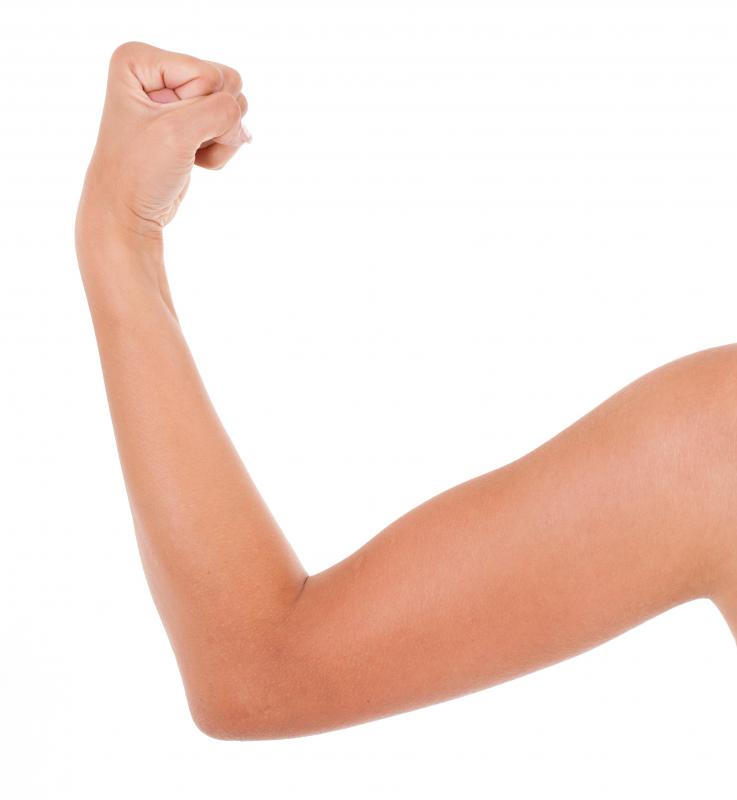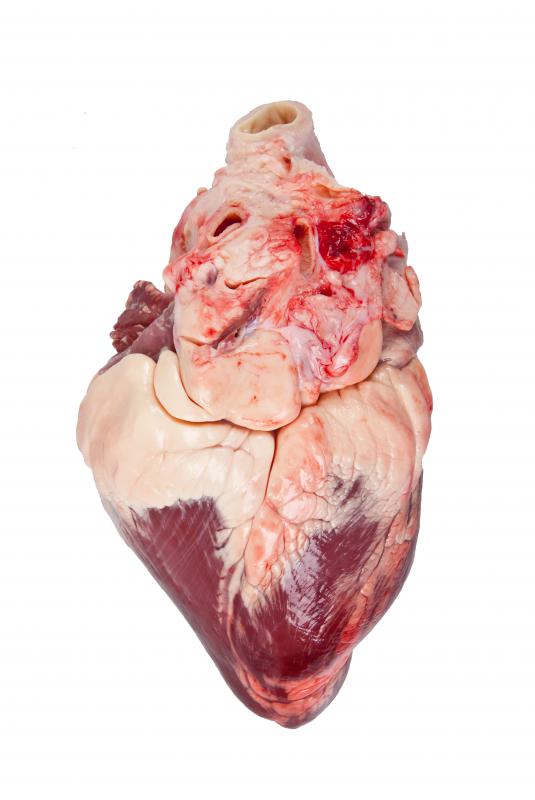At WiseGEEK, we're committed to delivering accurate, trustworthy information. Our expert-authored content is rigorously fact-checked and sourced from credible authorities. Discover how we uphold the highest standards in providing you with reliable knowledge.
What are the Different Muscle Tissue Types?
Muscle tissue can be broken down into three types: skeletal muscle, smooth muscle, and cardiac muscle. The muscle tissue types are differentiated by their functions and the shapes of their individual cells, with each associated with a different type of motion. Skeletal muscle is associated with voluntary motion linked to the movements of the skeletal system. Smooth muscle is associated with involuntary motion governed by bodily functions or reflexes, while cardiac muscle is associated with pulmonary motion.
Examples of skeletal muscles include the biceps, quadriceps, and triceps — the type of muscle most commonly associated with the idea of physical musculature. These muscles are all connected in some way to the body's bone structure. They are comprised of long and short cylindrical fibers, which are in turn made of striated cells with nuclei at the edges of the cells. These muscles are under conscious control, or voluntary motion.

Skeletal tissue can further be broken down into white or red muscle tissue types. Each has different purposes and different chemical compositions, such as the myoglobin that gives red tissue its color. Other skeletal muscle tissue types include flexors, extensors, abductors, and adductors, which are categorized by the type of motion they control.
Smooth muscles, also called visceral muscles, make up various bodily organs. Most people don't think of the stomach, intestines, or veins as muscles, but the cells that make up these body parts are actually part of the involuntary motion system. Their actions — such as digestion, blood oxygenation, and waste removal — are not consciously controlled, but instead operate by their own unconscious physical cycles. The cells are different from skeletal muscles, with centered nuclei and no striations. Their shape resembles a spindle.

The last type of muscle tissue, cardiac muscle, can be found only in the walls of the heart. The cross-striated, single-nucleus cells form quadrangular muscles with interlaced branching fibers. Although their motion is involuntary, their specialized form and function separate cardiac muscles from other muscles with involuntary motion. It's because of cardiac muscle that the heart maintains its regular beat without conscious control.

The uniting factor in all three muscle tissue types is the ability to contract. All muscle motion, whether pulmonary contractions, arm flexion, or stomach churning, is performed by muscles clenching and relaxing. Muscles cells don't exert outward motion; instead they create motion by pulling and causing other body tissues or connective tissues to either draw inwards or fall outwards when the muscle cells relax.
AS FEATURED ON:
AS FEATURED ON:













Discussion Comments
I've been trying to build up my muscle strength as part of my exercise regime. I'm not really interested in body building, but I've heard that muscle tissue burns something like three times the amount of calories as fat, so it seems like a good idea to have some!
And in fact, I've found it just makes everything easier. I think mostly because of the crunches and things I've been doing. I've noticed a huge difference in my looks and my general fitness since I've started.
@KoiwiGal - I guess the gluteous maximus (the buttock muscles) are quite large and bulky compared to other muscles, so they might be the strongest muscles just from being so big.
Although I've heard that the thigh muscles can be said to be stronger if a person works out a lot.
When you think about it, eating and walking are the things we all do most often, so it's not surprising that the muscles that govern those activities are big and/or strong.
Although, really when it comes down to it, the heart is the one that really takes the cake. It might not be the strongest, but it's not like it ever gets to take a break and recharge.
Of all the types of muscle tissue in the human body, it must work the hardest.
I recently read an interesting article which compared the strength of different kinds of muscles, in order to find the "strongest" muscle. Of course, it depends on what your definition of strongest is.
If it's the one that can exert the most force, then the jaw muscle is the strongest. This doesn't surprise me, as I have managed to crack a tooth by accidentally biting down too hard on a stone that was in some rice. That takes some force I think.
But others can argue that pound for pound, the strongest muscle is the uterus, as it is quite small, but has to exert quite a lot of power to get the baby out.
Other contenders included the muscles in your buttocks and the muscles which blink your eyes (which are supposedly 100 times stronger than they need to be).
It was quite interesting. It never turns out to be the muscles you'd expect.
Post your comments